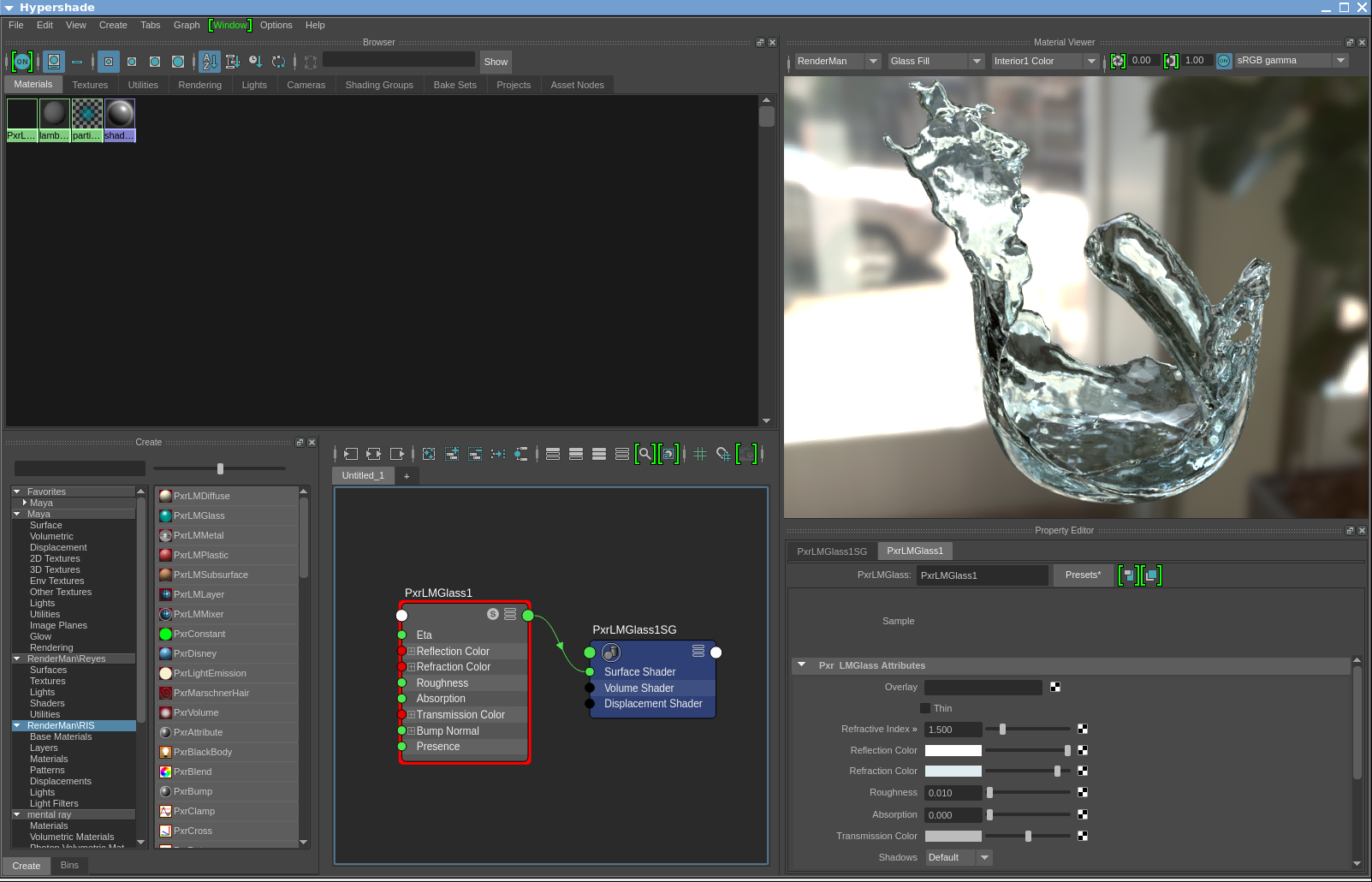

- #PIXAR RENDERMAN OCEAN MATERIAL FULL#
- #PIXAR RENDERMAN OCEAN MATERIAL CODE#
- #PIXAR RENDERMAN OCEAN MATERIAL DOWNLOAD#
#PIXAR RENDERMAN OCEAN MATERIAL DOWNLOAD#
You can download this PxrDisney example hereįridge was created by artist Fabio Sciedlarczyk. Hide the abrupt shadow terminator line when strong bump or normal maps are used. A value between 0 and 1 will produce unwanted noise !!!Īn optional connection point for bumped normals. IMPORTANT NOTE: This value should be either 0 or 1. Useful for modeling leaves and other thin, complex shapes. Presence is defined as a binary (0 or 1) function that can take on continuous values to antialias the shape. Select a transmission behavior for shadow rays: opaque or use baseColor.Ĭonnect a mask function here to apply a cutout pattern to your object. 0 means isotropic scattering, values between 0 and 1 means mainly forward scattering, values between -1 and 0 means mainly backscattering. Subsurface volume anisotropy (mean cosine for scattering) in path-traced subsurface scattering. The mean distances at which red, green, and blue scatter for subsurface. The color to mix with diffuse response according to the subsurface parameter.

Subsurface ScatterĬontrols the amount of subsurface scattering. Sometimes also labeled as "atDistance." The smaller the distance, the more saturated the transmittance color. The distance at which absorption yields the specified transmittance color.

The color of transmitted light for volumetric absorption (Beer's exponential extinction law). When set to Thin, the index of refraction is 1.

Whether the surface should be considered thin or that it forms the interface to thick material. Incident (maximum) specular transmission amount. 0 means 0% transmitted, 100% reflected 1 means 50% transmitted, 50% reflected 2 means 100% transmitted, 0% reflected. The amount of diffuse light that is transmitted rather than reflected. SheenĪn additional grazing angle / forward scatter diffuse component, primarily intended for clothĪmount of tint sheen toward base color. Note: this parameter has the inverse sense of roughness. 0 produces blurry highlights, 1 produces tight highlights. This parameter is usually not needed as the specular response is determined by the incident angle of light and the roughness and IOR parameters in a physically correct way, but this parameter can override that.Ī second, special-purpose specular lobe, useful for adding varnish or clear coat layer to your materials.Ĭontrols clearcoat glossiness.
#PIXAR RENDERMAN OCEAN MATERIAL FULL#
(It also influences subsurface scattering.)Ĭontrols the intensity of specular reflection 0 removes it and 1 maintains the full specular reflection response. The index of refraction of the material, controlling refraction, and also the amount of specular reflection. The degree of anisotropy controls the aspect ratio of the specular highlight. Again, usually, a PBR Roughness map would be used as the input to add roughness variation. it doesn't tint incoming light).ĭefines the surface roughness between the diffuse and specular responses. Grazing specular is still achromatic (i.e. The metallic model has no diffuse component and also has a tinted incident specular equal to the base color.Ī concession for artistic control that tints incident specular towards the base color. This is a linear blend between two different models. A PBR Metalness map can be used as the input. 0 is a dielectric, whereas a value of 1 is fully metallic. Specular Reflectionĭefines the metallic-ness of your material. For brighter objects, always use a PxrMeshLight. Only use for low emission objects and materials. The main surface color, usually supplied by texture maps. Image inspired by Figure 1 of the Burley Bsdf paper.
#PIXAR RENDERMAN OCEAN MATERIAL CODE#
The PxrDisneyBsdf is a nice and straightforward physically-based model with a concise number of parameters, allowing for a wide range of photoreal and artistic materials, including diffuse and specular reflection and transmission, clearcoat, sheen, and subsurface scattering.Īll CG animations made at Walt Disney Animation Studios use this material model and the source code for the Pixar version of this material, PxrDisneyBsdf, is available among the bxdf code examples.Įxamples of different material parameter settings for PxrDisneyBsdf: metallic reflection, thin diffuse transmission, thin specular transmission, subsurface scattering, and glass refraction and reflection. This Bxdf is based on Brent Burley's extended material model, introduced in " Extending the Disney BRDF to a BSDF with Integrated Subsurface Scattering" at SIGGRAPH 2015.


 0 kommentar(er)
0 kommentar(er)
